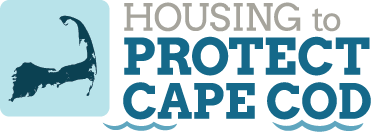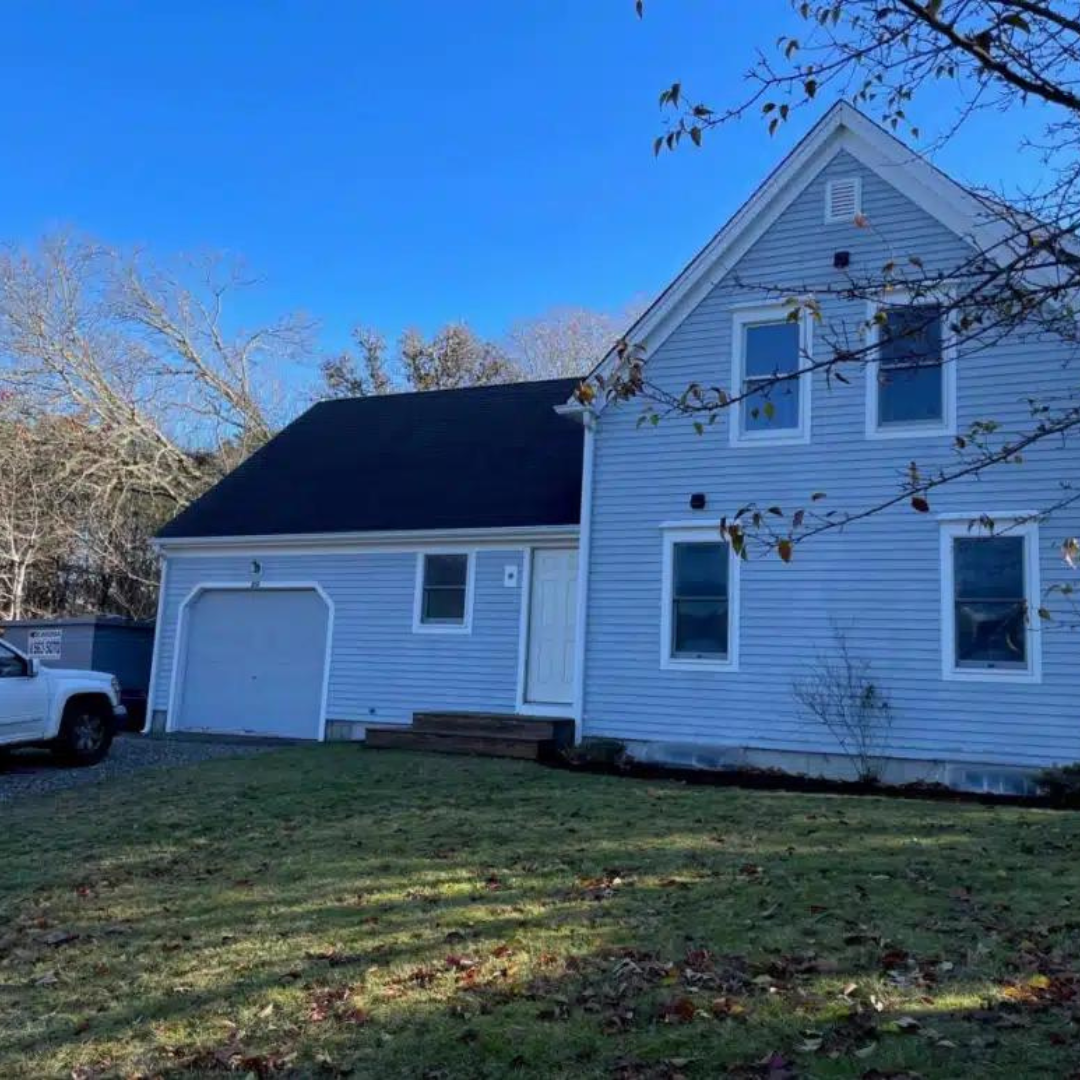
Glossary
Glossary of Housing Terms
Affordable Housing:
Capital “A” Affordable housing refers to deed-restricted housing available to residents based on income criteria. Protected price-restricted residential units.
affordable housing:
Lower-case “a” affordable housing refers to housing that is regionally affordable or attainable for local residents. These units are market-rate but priced at a level that local residents can afford but not price protected.
*Note: many Cape and islands workers with full-time jobs qualify to live in low-income Affordable housing.
Affordable-by-Design:
Market supplied affordable housing that can be rented, sold or operated for less due to design considerations including; smaller unit size, higher density, reduced/no parking requirements, attached or multi-family, green building.
Area Median Income (AMI):
A federal measurement for how h w (how) housing affordability is measured and managed. The estimated median (gross) income by metropolitan area (or county, in nonmetropolitan areas), indexed by household size. AMI is updated annually the US Department of Housing and Urban Development (HUD) and used as the basis of eligibility for most housing assistance programs.
Four primary categories of AMI:
- Extremely Low 0%-30% “Subsidized”
- Very Low 30%-50% “Very Low Income”
- Low 50%-80% “Low Income”
- Moderate 80%-120% “sometimes referred to as Workforce Housing”
Newer categories of AMI:
- Middle Moderate 121%+ “sometimes referred to as Missing Middle”
- Above Moderate Income 161%+
BANANA:
An acronym for the phrase ‘’Build Absolutely Nothing Anywhere Near Anyone,” a colloquialism signifying one’s opinion to build nothing at all anywhere.
Buffer Zone:
An area that separates land dedicated to one use from land dedicated to another use.
Chapter 40B:
A Massachusetts state law enacted in 1969 that established a 10% affordable housing goal for every Massachusetts city and town. In communities that have not met that 10% goal, developers who propose to build low- and moderate-income housing units can apply for an expedited permitting process and can receive zoning waivers.
Chapter 40R:
In Mass., also known as the Smart Growth Zoning Overlay District Act, Chapter 40R uses financial incentives to encourage communities to create dense residential or mixed-use smart growth zoning districts that include a high percentage of affordable housing units located near transit stations and/or in areas of concentrated development such as existing city and town centers.
Chapter 40S:
In Mass., additional state funding (Chapter 40 S) may be directed to cities and towns that establish a 40R district, to cover the costs of educating any school-age children who move into such districts. This legislation was in response to the common concern that new housing was costly in terms of municipal finances, given the imbalance of tax revenues and service costs. Qualifying communities will be reimbursed for the net cost of educating students living in new housing in smart growth districts.
Community Development Block Grants (CDBG):
The Community Development Block Grant (CDBG) program is a federal program created in 1974 that provides communities with resources to address a wide range of unique community development needs. The Department of Housing and Urban Development (HUD) provides funding either directly to larger municipalities designated as entitlement communities or through the Massachusetts Department of Housing and Community Development’s CDBG program.
Community Land Trust:
A form of ownership similar to a condominium in that each household owns an individual unit but not the land beneath it. However, in a community land trust, the common areas and land are owned by a non-profit, community-based corporation. Because land values are controlled and this is a limited-equity form of ownership, it maintains long-term affordability.
Community Preservation Act (CPA)/ Chapter 44B:
The Community Preservation Act Enabling Legislation allows communities the option of establishing a Community Preservation Fund to preserve open space, historic resources and community housing by imposing a surcharge of up to 3% on local property taxes. The state provides matching funds from its own Community Preservation Trust Fund, generated from an increase in certain Registry of Deed fees. The Community Preservation Coalition (CPC) works with communities and advocates and supports the passage of CPA.
Congregate Housing:
Housing accommodation that offers separate rooms or apartments, but provides shared activities of daily living with other residents.
Cottage Housing:
Generally defined as a grouping of small, single-family dwelling units clustered around a common area and developed with a coherent plan for the entire site. They have gained popularity in recent years as a type of infill development on small sites within existing developed areas. The cottages may have other shared amenities. The shared common area and coordinated design allow densities that are higher than typical single-family neighborhoods while minimizing impacts on adjacent residential areas.
Deed-restricted Housing:
Primary tool by which housing is price protected. Limits who the housing can be rented or sold too. Typical restrictions are income-related but can also be employment and location based.
Density Bonus:
The most common form of incentive used by inclusionary housing programs. A density bonus provides an increase in allowed dwelling units per acre (DU/A), Floor Area Ratio (FAR) or height which generally means that more housing units can be built on any given site.
Department of Housing and Urban Development (HUD):
The U.S. Department of Housing and Urban Development’s mission is to create strong, sustainable communities and quality affordable homes. HUD administers hundreds of programs nationwide, targeting communities from urban to rural.
Discretionary Approvals:
A decision in which the approving entity or person can use their judgment in deciding whether and how to carry out or approve a project. The opposite of this is “by right,” in which approval is more or less guaranteed as long as one follows the code.
Expiring Use Restrictions:
Refers to affordable housing where the restrictions on rents and/or incomes of occupants could or will expire in the near future if owners prepay their publicly assisted mortgages and convert the units to market rate housing. The units were built with federal and/or state subsidies (such as low-cost mortgages, interest subsidies, rent subsidies and loan guarantees). While mortgages and other assistance traditionally had terms as long as 30‐40 years, many contracts gave owners the option to prepay the mortgage after 20 years and thus remove use restrictions on the property.
Extremely Low Income:
Adjusted income that is below 30% of the area median income (AMI) adjusted for household size and for the county or Metropolitan Statistical Area.
Fair Housing Act/MA Fair Housing Act:
Federal legislation, first enacted in 1968 and expanded by amendments in 1974 and 1988, that provides the Secretary of HUD with investigation and enforcement responsibilities for fair housing practices. The law prohibits discrimination in housing and lending based on race, color, religion, sex, national origin, handicap, or familial status. There is also a Massachusetts Fair Housing Act, which extends the prohibition against discrimination to sexual orientation, marital status, ancestry, veteran status, children, and age. The state law also prohibits discrimination against families receiving public assistance or rental subsidies, or because of any requirement of these programs.
Forms Based Code:
A land development regulation that fosters predictable built results and a high-quality public realm by using physical form (rather than separation of uses) as the organizing principle for the code. A form-based code is a regulation, not a mere guideline, adopted into city, town, or county law. A form-based code offers a powerful alternative to conventional zoning regulation.
Green Development:
A real estate development concept that considers social and environmental impacts of development. It uses environmentally friendly building practices and energy efficiency. There are a number of public and private incentives for green development.
Housing Choice Vouchers:
Allow very low-income households to choose and lease privately-owned rental units. Vouchers are administered by local public housing agencies and are the federal government’s main rental assistance program. Vouchers are provided to eligible households, and recipients find their own housing (it must meet program health and safety requirements). Housing voucher recipients must pay 30 percent of their monthly adjusted gross income for rent and utilities. The Public Housing Agencies (PHA) calculates the maximum amount of allowable assistance as the area moderate-priced unit standard minus 30 percent of the household’s income.
Housing Consumer Education Centers (HCEC):
A statewide information and referral network that assists tenants, landlords, current and prospective homeowners with their housing problems. Housing Assistance Corporation is the regional HCEC for the Cape and Islands.
Housing Trust Fund:
Distinct funds established by city, county or state governments that receive ongoing, dedicated sources of public funding to support the preservation and production of affordable housing, and opportunities for households to access affordable homes. While housing trust funds can be a repository for private donations, they are neither public/private partnerships nor endowed funds. There are currently 38 states with housing trust funds, and more than 550 city- and county-level funds in operation.
Inclusionary Zoning:
A local zoning ordinance that either requires or encourages a developer to include affordable housing as part of a development, or contribute to a fund for such housing. The bylaw may provide incentives such as increased density, reduced parking requirements, or expedited permitting in exchange for the affordable housing.
Infill Development:
The practice of building on vacant or undeveloped parcels in dense areas, especially urban and inner suburban neighborhoods. Promotes compact development.
Land Trust:
In the strictest sense, a nonprofit organization that sells affordable homes but retains ownership of the land under the structures to control, through the lease, the long-term affordability of the homes. The lease ensures that the home is resold to a low-income family, sold at a below-market price, and/or sold with a share of the appreciated value going to the nonprofit. The term is used more loosely to describe programs that subsidize fee simple homeownership for low-income families and impose similar kinds of long-term affordability controls.
Limited-Equity Ownership:
Residents own their units, which provides security and wealth creation, but the price at which the housing can be resold or leased is limited. These restrictions can be based on the income characteristics of the incoming buyers, on the sale price itself, or both. There are two typical forms of limited-equity ownership: 1) condominium- each household owns its unit, but an association owns the land and common areas; 2) cooperative- each household owns a share of the cooperative housing association, not a unit.
Local and Regional Housing Authorities (LHAs):
A housing authority set up by a city or town, or group of towns, in accordance with state law, M.G.L. Ch. 149 to provide low‐income family or elderly housing.
Local Housing Partnership:
A local housing committee appointed by the municipality with the purpose of promoting opportunities to produce and preserve affordable housing.
Local Initiative Program (LIP):
A state program under which communities may use local resources and DHCD technical assistance to develop affordable housing that is eligible for inclusion on the State Housing Inventory (SHI). LIP is not a financing program, but the DHCD technical assistance qualifies as a subsidy and enables locally supported developments, that do not require other financial subsidies, to qualify for inclusion on the Subsidized Housing Inventory.
Low Income:
Adjusted income that is between 50 and 80% of the area median income (AMI) adjusted for household size and for the county or Metropolitan Statistical Area.
Low Income Housing Tax Credits (LIHTC):
A federal tax incentive that facilitates financing to develop low-income housing. The program provides dollar-for-dollar credit toward taxes owed by the housing owner. These tax credits can be sold, or used to back up bonds that are sold, to obtain financing to develop the housing. States receive an annual dollar value of credits which they then allocate to qualifying projects based on priorities established in a state allocation plan. DHCD is the allocating agency for Massachusetts.
Market Rate:
Area rent levels for units leased without any subsidy or assistance from a public program.
Massachusetts Rental Voucher Program (MRVP):
A state‐funded rental assistance program begun in November 1992, as a revised version of the state’s previous rental assistance program (Chapter 707). It has both a project‐based component (Section 8) and a tenant-based component.
Missing Middle Housing:
Housing that can supplement the existing housing market with much-needed variety and provide options at a wide range of price points.
Mixed Income Housing Development:
Development that includes housing affordable to various income levels.
Mixed Use Development:
Projects that combine different types of development such as residential, commercial, office, industrial and institutional into one project.
Moderate-Density Housing:
The moderate-density housing is intended to create, maintain, and promote neighborhoods and allow a broad range of housing types. There are many ways in which to integrate moderate-density housing into existing community contexts, from a small accessory dwelling unit (ADU) built into a single-family home, residential care facilities, to townhouses, to cottage courts, to apartment complexes with 30-50 units.
Moderate Income:
Adjusted income that is between 80 and 120% of the area median income (AMI) adjusted for household size and for the county or Metropolitan Statistical Area.
Neighborhood Revitalization Strategy Area (NRSA):
Communities with HUD‐approved NRSAs are offered enhanced flexibility in undertaking economic development, housing and public service activities with their CDBG funds. This flexibility is designed to promote innovative programs in economically disadvantaged areas of the community.
NIMBY:
An acronym for the phrase ‘Not In My Backyard’, a colloquialism signifying one’s opposition to the locating of something considered undesirable in one’s neighborhood.
Open Space:
Generally, refers to undeveloped land or water area.
Priority Development Areas (PDAs):
PDAs are places with convenient public transit service prioritized by local jurisdictions that are suitable for housing, jobs and services growth. The Smart Growth Maps created by Housing Assistance and Association to Preserve Cape Cod represent these areas regionally, and town-by-town, with a colored-coded key.
Regional Planning Agencies (RPAs):
Public organizations that serve the local governments by dealing with issues and needs that cross city, town and county boundaries, through planning, policymaking, advocacy and technical assistance. Different RPAs have different strengths and focuses. The Cape Cod Commission is a RPA. There are 12 regional planning agencies across Massachusetts.
Rent Control:
Anti-gentrification ordinances aimed at limiting the amount a landlord can raise the rent, typically by setting an allowable annual percentage increase. Some ordinances also limit the amount the rent can be raised once a unit is vacant (i.e., between renters).
Rent Subsidies:
Term typically used to describe HUD’s Section 8 program, which subsidize, the rent of low-income tenants in privately owned apartments and are typically administered by local housing authorities. There are two types of subsidies with only slight technical differences—certificates and vouchers. Generally, tenants pay 30% of income for rent and utilities and HUD pays the rest directly to the landlord. Some local governments sometimes provide rent subsidies or stipends with their own funds.
Request for Proposal (RFP):
A process for soliciting applications for technical or consulting services or for project developers when funds are awarded competitively.
Section 502:
A program of the Rural Housing Service that provides low-income borrowers with direct low-interest loans or loan guarantees to buy a new or existing home. The guarantors are used as an incentive for private, institutional lenders to make home purchase loans at interest rates slightly below market. Section 502 loans are also sometimes originated as low-interest second mortgage loans made in tandem with first mortgage loans from private lenders.
Section 8:
A HUD program providing project-based funding for rental assistance to low‐income households. Participating tenants typically pay 30% of their income for housing (rent and utilities) and the federal subsidy pays the balance of the rent.
Self-Sufficiency Programs:
A loosely defined term used to describe various programs that assist the homeless, people on welfare or public housing tenants in getting training, day care and employment. HUD funds or promotes several self-sufficiency programs for public housing tenants and tenants with HUD rent subsidies.
Site Plan:
A detailed plan that depicts the location of improvements on a parcel of land which also contains all the information required by the zoning ordinance.
Smart Growth:
An approach to planning and development that promotes a more efficient use of land to reduce sprawl using compact development patterns that are less dependent on the automobile, include a range of housing options, and improve the balance of jobs and housing within the community or the region. Housing Assistance and Association to Preserve Cape Cod created Smart Growth Maps for each town on Cape Cod. (See Priority Development Areas.)
Subsidy:
Typically refers to financial assistance that fills the gap between the cost of affordable housing development/operations and the mortgage or sales income supported by income restricted rentals or homeownership sales. Affordable rents and home sales prices are determined by financing program eligibility requirements. Often, multiple subsidies from various sources are needed, referred to as the “layering” of subsidies, in order to make a project feasible. In the state’s Local Initiative Program (LIP), DHCD’s technical assistance qualifies as a subsidy and enables locally supported developments that do not require other financial subsidies to use the comprehensive permit process.
Subsidized Housing:
There are two general types of housing subsidies: 1) development subsidies (supply side) to help construct or acquire housing, and 2) operating subsidies (demand side) that supplement the amount that residents can pay.
Transitional Housing:
A loosely defined term covering a number of housing facilities that serve the formerly homeless, people trying to get off welfare, or people released from institutions. Usually the term of stay is restricted to one to two years. The most common form of transitional housing is apartments or shared living facilities for the formerly homeless or single female parents with children.
Very Low Income:
Adjusted income below 50% of the area median income (AMI) adjusted for household size and for the county or Metropolitan Statistical Area.
Vouchers:
Or Housing Vouchers. See “Rent Subsidies”.
Zoning:
The classification of land by a) types of uses permitted and prohibited and b) by densities and intensities permitted and prohibited in a given district, including regulations regarding building location on lots.



